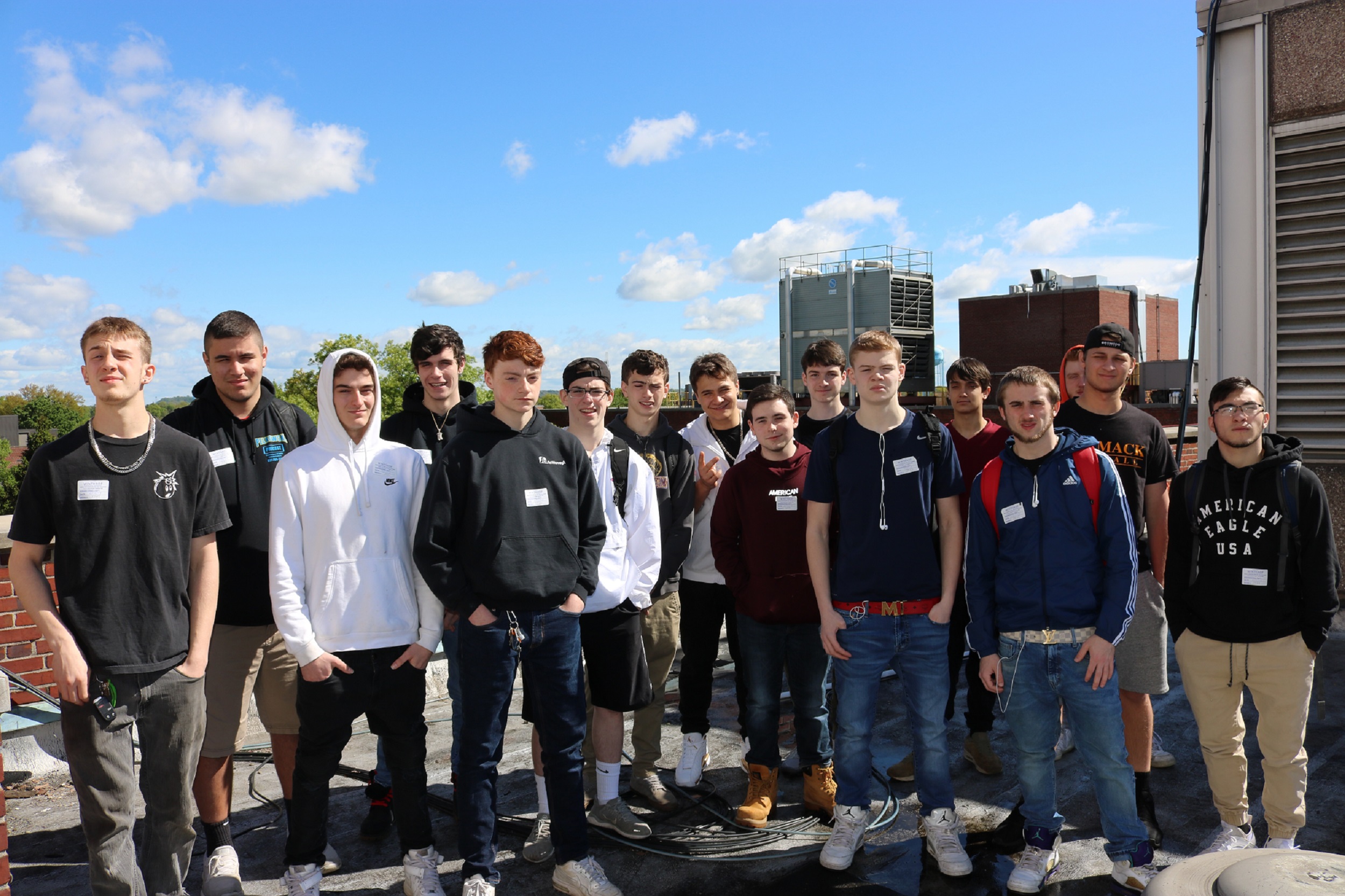NYU Winthrop Hospital’s engineering department hosted nearly 30 HVAC students from western Suffolk BOCES, providing a tour of the hospital’s enormous and incredibly complex mechanical plants, including centrifugal chillers, absorption chillers, cooling towers, air handlers, and more.
The students, high school juniors and seniors from 18 different Suffolk County school districts, learned of the broad applications of heating, ventilation and air conditioning systems in an institutional setting, and they were exposed to a breadth of job possibilities for the future. A highlight of the tour was visiting the rooftop for a birds-eye view of the hospital’s central mechanical plants, with the Mineola skyline as a backdrop.
“This was an important educational experience for BOCES students who’ve chosen to pursue HVAC careers, and they were an enthusiastic crowd,” said Michael Hinchcliffe, chief engineer at NYU Winthrop Hospital. “We brought their profession to life on a grand scale that none of them had ever before seen.”
More than 5,000 tons of refrigeration flow throughout the hospital’s HVAC systems, which are comprised of various water-cooled plants that pipe water chillers that are used to transfer the heat from the building to the outdoor environment. The students, who all attend BOCES in Dix Hills, toured portions of these facilities housed internally as well as on the roof. In addition, Patrick Killeen, the controls engineering manager, showed students his “building automation system” on a laptop where, at the touch of a finger, engineering can control the temperature, humidity, and building pressurization of every distinct corner of the hospital — all in real time.
“Pressurization in a hospital is critical to safety and infection control,” explained Killeen. “Areas like the operating room require positive pressure to push clean air out, so that dirty air can’t push in. Decontamination or isolation rooms, on the other hand, require negative pressure to contain and exhaust the potentially contaminated air, such as if there was ever a case of Ebola. Our real-time systems can show us when a door opens or closes along with temperature and humidity — at any second of the day.”
Students also learned about the hospital’s critical power systems: NYU Winthrop has six separate power supplies. If one were to go out, it was explained to students that there’s an automated transfer switch to emergency power, and while the emergency generators are kicking in, there is an uninterruptable power supply to back up power instantaneously, filling the void so that all power-driven activities at the hospital continue seamlessly and uninterrupted.



